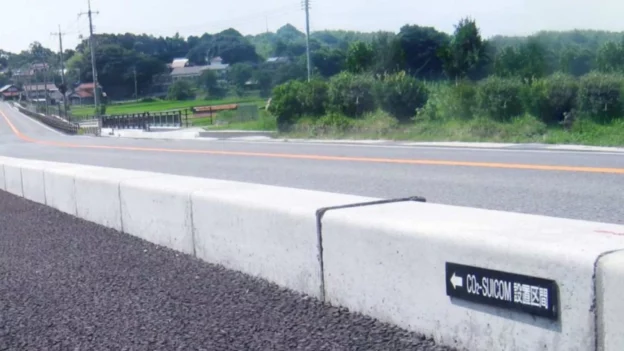CO2-SUICOM is presented as the first concrete that captures carbon directly from its production. It is one of the materials with unique characteristics in its class with this capacity in the construction sector.
How does CO2-SUICOM concrete work?
This material reduces the use of traditional cement by more than 50%, thus considerably reducing the emissions associated with its manufacturing. Importantly, CO2-SUICOM can be produced on-site at industrial facilities, which optimizes the process by eliminating unnecessary transfers and using CO₂ efficiently.
According to projections, the global concrete market is expected to reach $364 billion by 2028, driven by growth in urbanization and infrastructure development. The collaboration between Kajima , The Chugoku Electric Power , Denka , and Landes has resulted in the creation of CO2-SUICOM concrete.
CO2-SUICOM is distinguished by using industrial waste and carbon dioxide instead of traditional cement and water. This approach not only reduces the amount of cement used, but also allows the capture of CO₂ during the concrete hardening process, making it an effective solution against greenhouse gas emissions.
A concrete that captures carbon with great potential
This concrete is manufactured using CO₂ emissions from industrial processes , which are channeled into a mixing chamber for effective use in the production of concrete. This method ensures that CO₂ is retained within the material, helping to reduce the carbon footprint.
From an environmental perspective, traditional concrete generates approximately 288 kilograms of CO₂ emissions per cubic meter . CO2-SUICOM, for its part, not only reduces this figure, but also captures 18 kilograms of carbon per cubic meter, contributing to Japan’s strategy towards carbon neutrality by 2050.
CO2-SUICOM concrete uses “γ-C2S”, which reacts with carbon dioxide to harden, instead of the traditional reaction between cement and water. This allows places such as thermal plants to use carbon-rich gases to make concrete that ultimately contributes to reducing emissions.

CO2-SUICOM reduces the use of traditional cement by more than 50%. Source: Kajima Official Channel.
If Japan were to replace its annual concrete consumption with CO2-SUICOM, it could reduce up to 27.84 million tons of carbon emissions , demonstrating the potential of this material to positively impact the environment on a large scale.
Follow us on social networks and don’t miss any of our publications!
Inspenet.com YouTube LinkedIn Facebook Instagram X
Source and photo: Kajima

